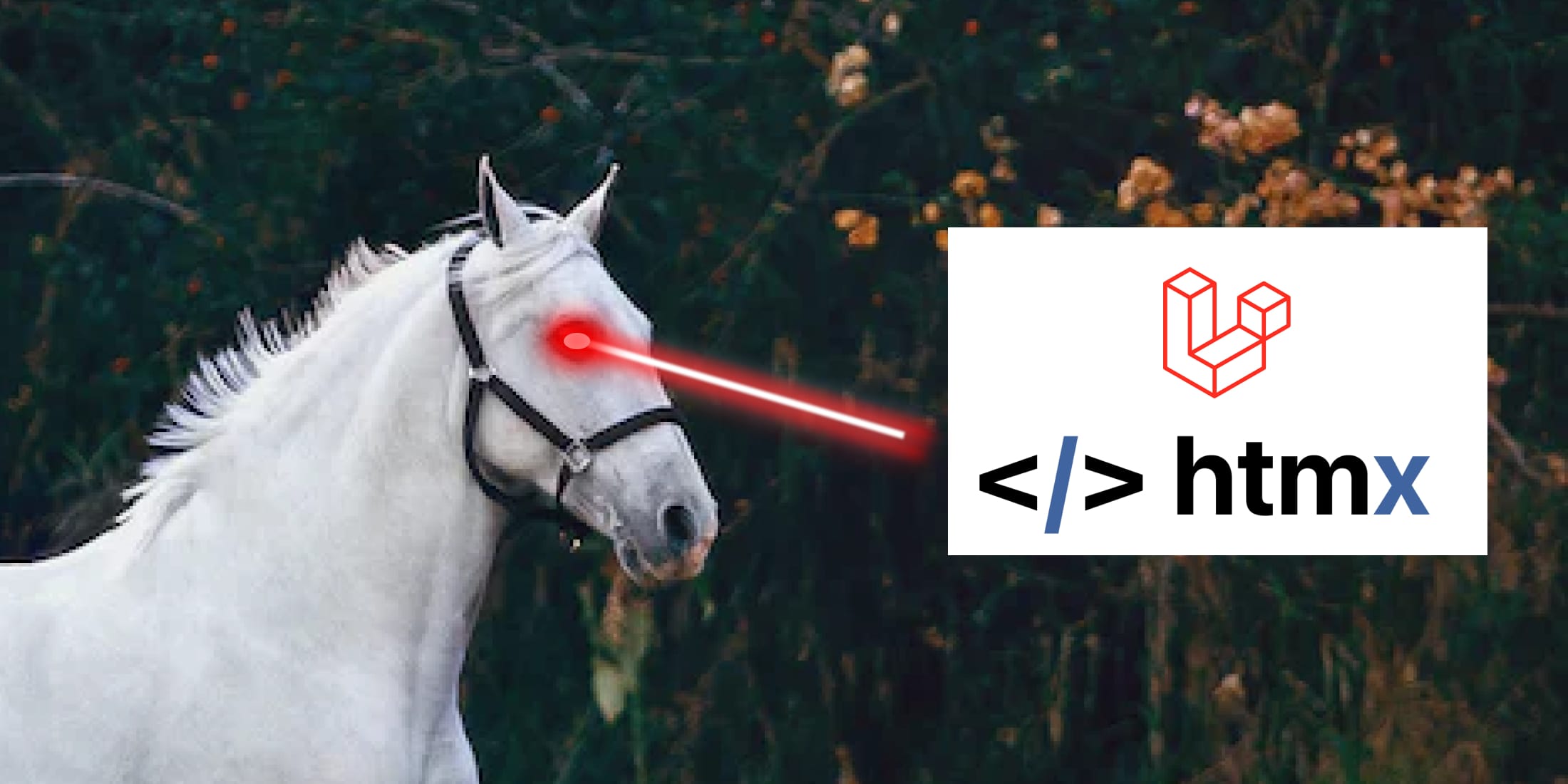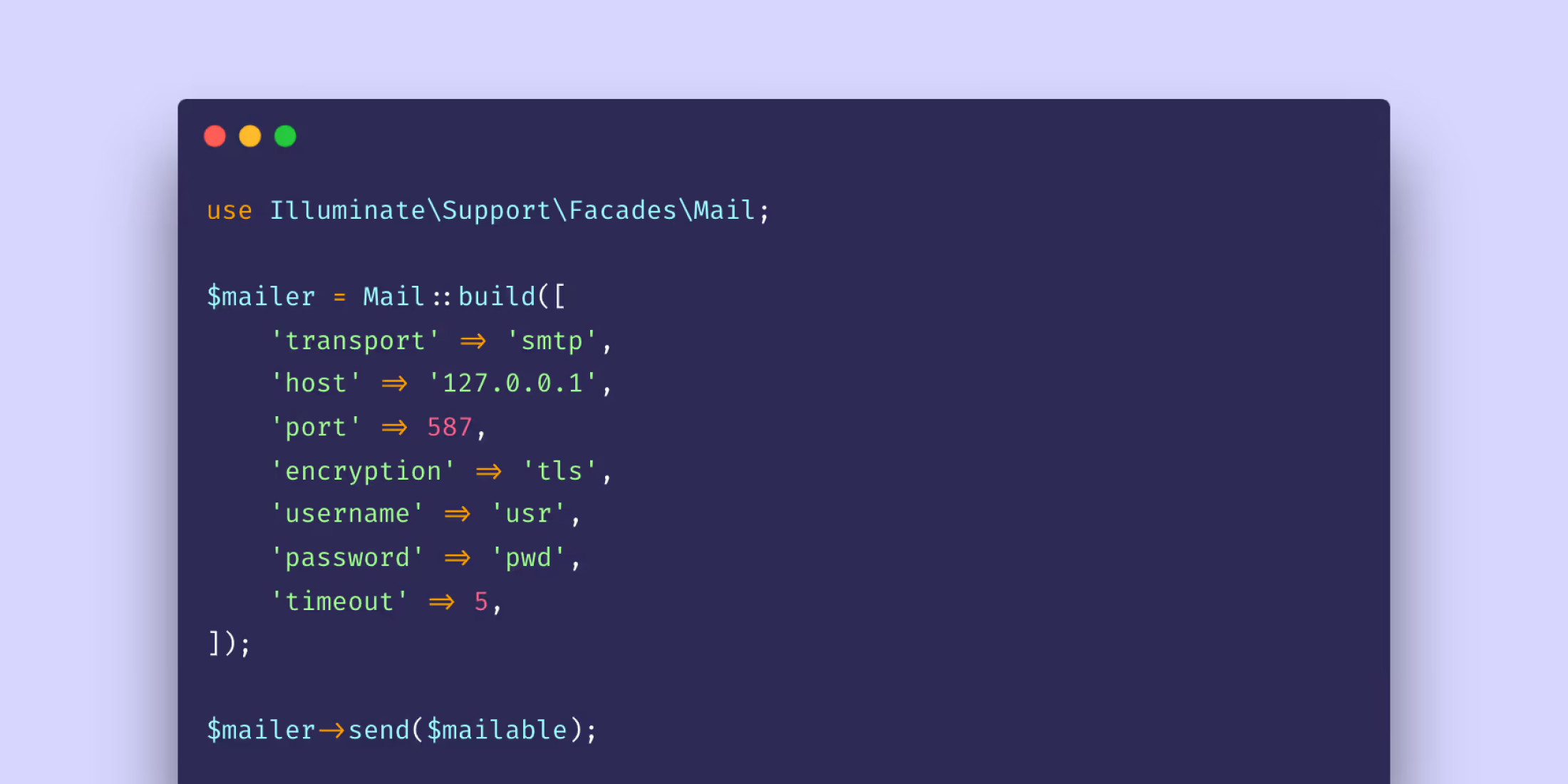Laravel htmx is a package by Maurizio Bonani that gives you a nice way of working with htmx, a library that allows you to access modern browser features directly from HTML, rather than using JavaScript:
htmx gives you access to AJAX, CSS Transitions, WebSockets and Server Sent Events directly in HTML, using attributes, so you can build modern user interfaces with the simplicity and power of hypertext
htmx is small (~14k min.gz’d), dependency-free, extendable, IE11 compatible & has reduced code base sizes by 67% when compared with react
Let's look at the features the Laravel htmx package outlines in their readme:
Htmx Request
You can resolve an instance of the HtmxRequest from the container which provides shortcuts for reading the htmx-specific request headers.
use Mauricius\LaravelHtmx\Http\HtmxRequest; Route::get('/', function (HtmxRequest $request){ // always true if the request is performed by Htmx $request->isHtmxRequest(); // indicates that the request is via an element using hx-boost $request->isBoosted(); // the current URL of the browser $request->getCurrentUrl(); // true if the request is for history restoration after a miss in the local history cache $request->isHistoryRestoreRequest() // the user response to an hx-prompt $request->getPromptResponse(); // the id of the target element if it exists $request->getTarget(); // the name of the triggered element if it exists $request->getTriggerName(); // the id of the triggered element if it exists $request->getTriggerId();});Htmx Response
-
HtmxResponseClientRedirect
htmx can trigger a client side redirect when it receives a response with the HX-Redirect header. The HtmxResponseClientRedirect makes it easy to trigger such redirects.
use Mauricius\LaravelHtmx\Http\HtmxResponseClientRedirect; Route::get('/', function (HtmxRequest $request){ return new HtmxResponseClientRedirect('/somewhere-else');});-
HtmxResponseClientRefresh
htmx will trigger a page reload when it receives a response with the HX-Refresh header. HtmxResponseClientRefresh is a custom response class that allows you to send such a response. It takes no arguments, since htmx ignores any content.
use Mauricius\LaravelHtmx\Http\HtmxResponseClientRefresh; Route::get('/', function (HtmxRequest $request){ return new HtmxResponseClientRefresh();});-
HtmxResponseStopPolling
When using a polling trigger, htmx will stop polling when it encounters a response with the special HTTP status code 286. HtmxResponseStopPolling is a custom response class with that status code.
use Mauricius\LaravelHtmx\Http\HtmxResponseStopPolling; Route::get('/', function (HtmxRequest $request){ return new HtmxResponseStopPolling();});For all the remaining available headers you can use the HtmxResponse class.
use Mauricius\LaravelHtmx\Http\HtmxResponse; Route::get('/', function (HtmxRequest $request){ return with(new HtmxResponse()) ->location($location) // Allows you to do a client-side redirect that does not do a full page reload ->pushUrl($url) // pushes a new url into the history stack ->replaceUrl($url) // replaces the current URL in the location bar ->reswap($option) // Allows you to specify how the response will be swapped ->retarget($selector); // A CSS selector that updates the target of the content update to a different element on the page});Additionally, you can trigger client-side events using the addTrigger method.
use Mauricius\LaravelHtmx\Http\HtmxResponse; Route::get('/', function (HtmxRequest $request){ return with(new HtmxResponse()) ->addTrigger($event) ->addTriggerAfterSettle($event) ->addTriggerAfterSwap($event);});You can call those methods multiple times to trigger multiple events.
Render Blade Fragments with Htmx
This library also provides a basic Blade extension to render template fragments.
The library provides two new Blade directives: @fragment and @endfragment. You can use these directives to specify a block of content within a template and render just that bit of content. For instance:
{{-- /contacts/detail.blade.php --}}<html> <body> <div hx-target="this"> @fragment("archive-ui") @if($contact->archived) <button hx-patch="/contacts/{{ $contact->id }}/unarchive">Unarchive</button> @else <button hx-delete="/contacts/{{ $contact->id }}">Archive</button> @endif @endfragment </div> <h3>Contact</h3> <p>{{ $contact->email }}</p> </body></html>With this fragment defined in our template, we can now render either the entire template:
Route::get('/', function ($id) { $contact = Contact::find($id); return View::make('contacts.detail', compact('contact'));});Or we can render only the archive-ui fragment of the template by using the renderFragment macro defined in the \Illuminate\View\View class:
Route::patch('/contacts/{id}/unarchive', function ($id) { $contact = Contact::find($id); // The following approaches are equivalent // Using the View Facade return \Illuminate\Support\Facades\View::renderFragment('contacts.detail', 'archive-ui', compact('contact')); // Using the view() helper return view()->renderFragment('contacts.detail', 'archive-ui', compact('contact')); // Using the HtmxResponse Facade return \Mauricius\LaravelHtmx\Facades\HtmxResponse::renderFragment('contacts.detail', 'archive-ui', compact('contact')); // Using the HtmxResponse class return with(new \Mauricius\LaravelHtmx\Http\HtmxResponse()) ->renderFragment('contacts.detail', 'archive-ui', compact('contact'));});OOB Swap support
htmx supports updating multiple targets by returning multiple partial responses with hx-swap-oop. With this library you can return multiple fragments by using the HtmxResponse as a return type.
For instance, let's say that we want to mark a todo as completed using a PATCH request to /todos/{id}. With the same request, we also want to update in the footer how many todos are left:
{{-- /todos.blade.php --}}<html> <body> <main hx-target="this"> <section> <ul class="todo-list"> @fragment("todo") <li id="todo-{{ $todo->id }}" @class(['completed' => $todo->done])> <input type="checkbox" class="toggle" hx-patch="/todos/{{ $todo->id }}" @checked($todo->done) hx-target="#todo-{{ $todo->id }}" hx-swap="outerHTML" /> {{ $todo->name }} </li> @endfragment </ul> </section> <footer> @fragment("todo-count") <span id="todo-count" hx-swap-oob="true"> <strong>{{ $left }} items left</strong> </span> @endfragment </footer> </main> </body></html>We can use the HtmxResponse to return multiple fragments:
Route::patch('/todos/{id}', function ($id) { $todo = Todo::find($id); $todo->done = !$todo->done; $todo->save(); $left = Todo::where('done', 0)->count(); return HtmxResponse::addFragment('todomvc', 'todo', compact('todo')) ->addFragment('todomvc', 'todo-count', compact('left'));});Find out more about the Laravel htmx package on GitHub.

Eric is the creator of Laravel News and has been covering Laravel since 2012.











